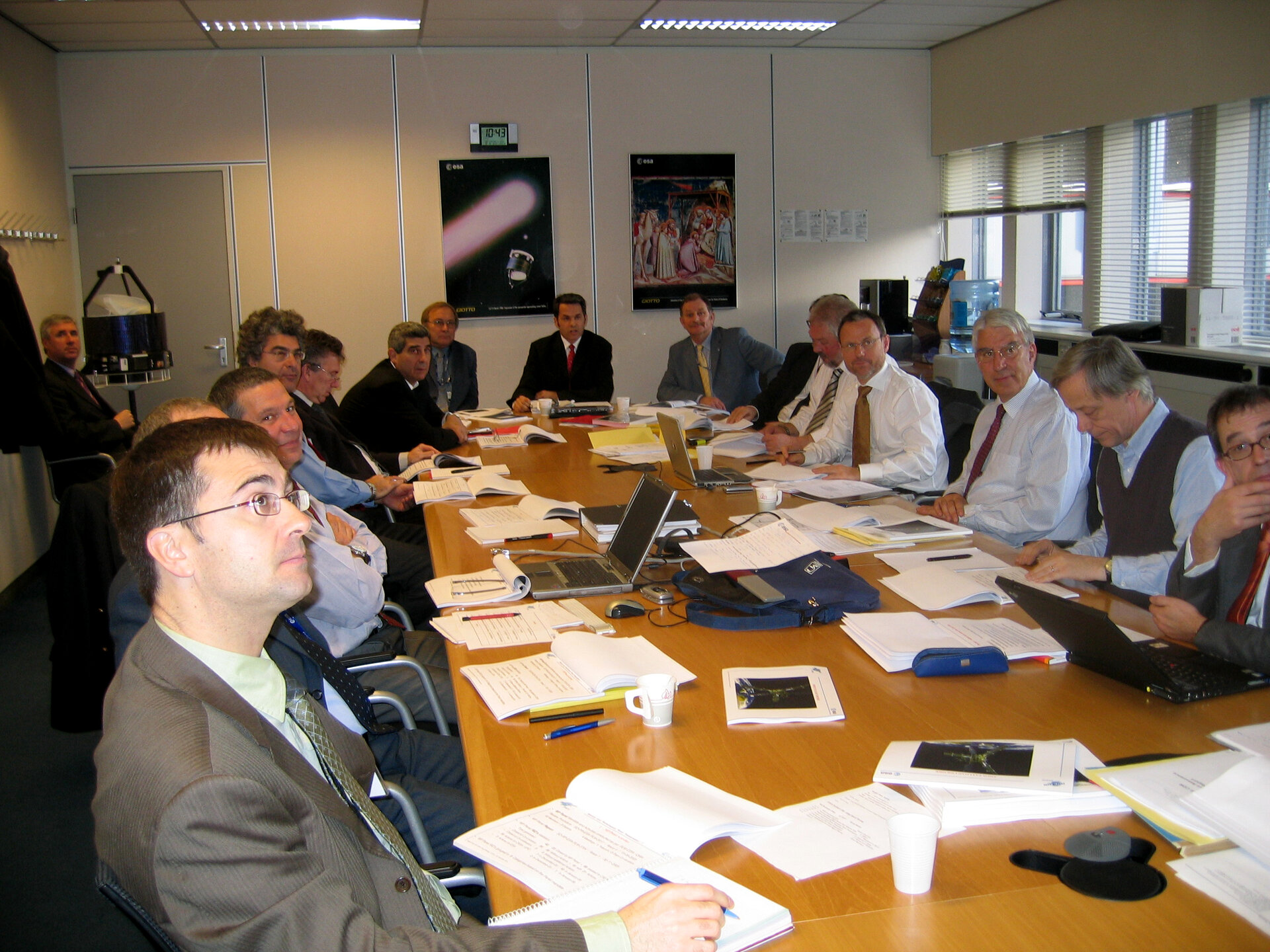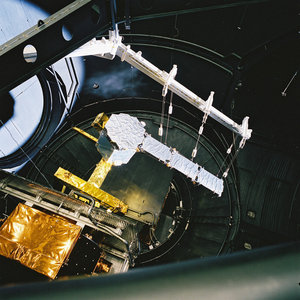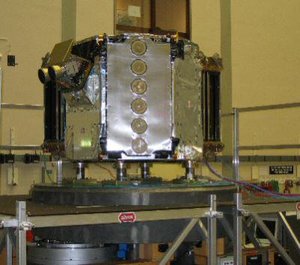SMOS instrument passes Critical Design Review
ESA's Soil Moisture and Ocean Salinity (SMOS) mission has just passed a major milestone with the conclusion of the Critical Design Review for the mission's innovative MIRAS (Microwave Imaging Radiometer using Aperture Synthesis) payload.
The Critical Design Review, which was in progress for more than two months, thoroughly examined every aspect of the instrument design, the interfaces, the qualification for environmental loads, the performance analyses as well as the schedule for development. Now that everything has been approved, the go-ahead is given to undertake the final manufacturing, assembly and the test phase of the flight hardware.

MIRAS is a novel radiometer designed to operate between 1400 and 1427 MHz (L-band) and consists of a central structure and three deployable arms. There are 69 antenna elements – the so-called LICEF receivers equally distributed over the three arms and central structure. Each LICEF is an antenna-receiver integrated unit that measures the radiation emitted from the Earth at L-band. The SMOS mission will observe soil moisture over the Earth's landmasses and salinity over the oceans to contribute to furthering our knowledge of the water cycle and improve climate, weather and extreme-event forecasting.
In support of the decision to give the go-ahead for final manufacturing, the results from two test campaigns using engineering models were reported:
The 'Reduced Engineering Model', which included all of the electronic subsystems and two integrated LICEFs, served to test the electrical interfaces between the MIRAS electronic units and the Proteus spacecraft. The model also served to demonstrate that the instrument would be was sufficiently robust to withstand electromagnetic and radio frequency interference.

The 'Structural Thermal Model', which is a full payload structure and includes functioning models of the hold-down and release mechanisms to test deployment of the antenna arms, was used to carry out mechanical testing and qualification exercises such as mass property measurements, and vibration, acoustic and deployment testing. It has also been used in the thermal balance tests to simulate the in-orbit heat gains and losses in order to make comparisons with the mathematical analyses that have been carried out.
With the results of these test campaigns available and with all the subsystems already gone through the same exercise, the Critical Design Review was successful. The Review Board, which included senior ESA management at Director and Department Head level, gave the green light to proceed with the manufacturing of the flight hardware and acknowledged industry and the SMOS project teams for their outstanding work.
EADS (European Aeronautic Defence and Space)-CASA Espacio, Spain is the Prime Contractor for MIRAS.







